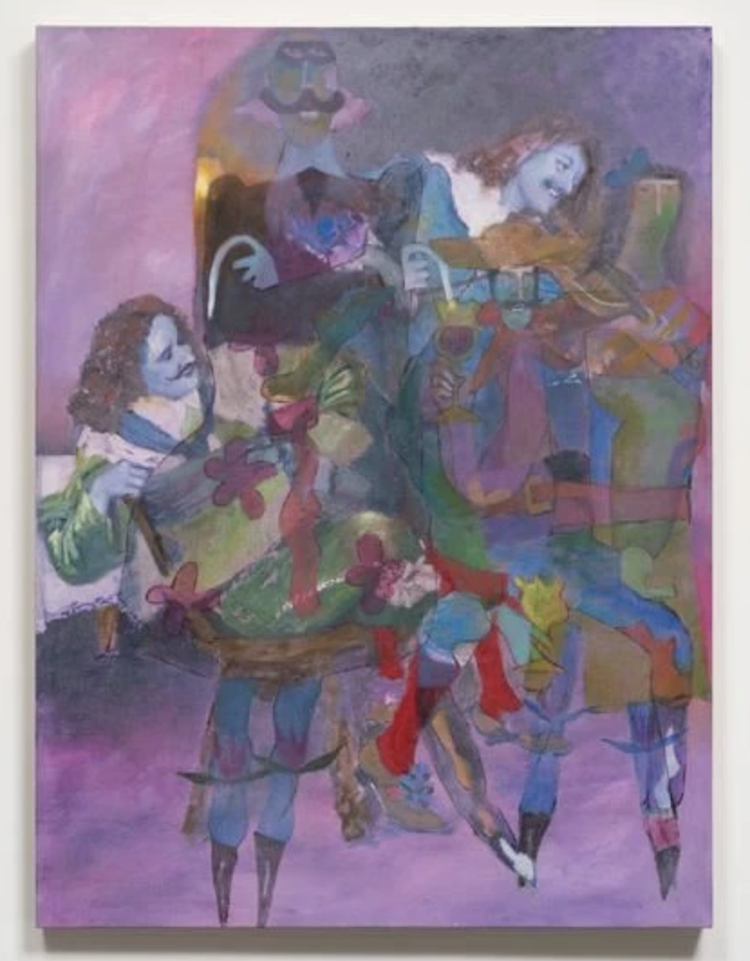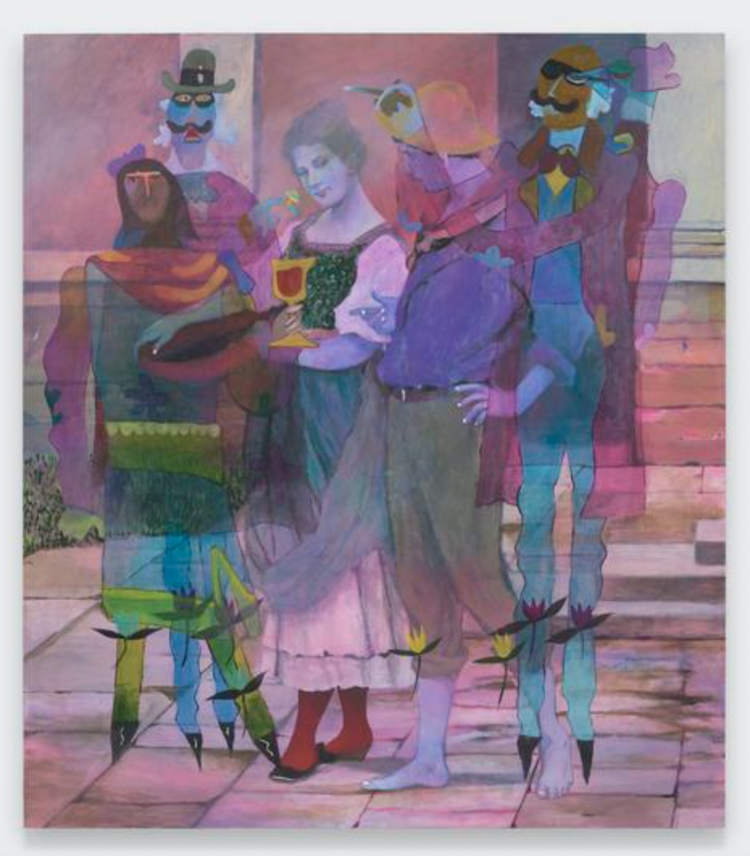Rachel Uffner Gallery is pleased to present Serenade, the first exhibition at the gallery by Los Angeles-based painter Joshua Petker. The artist incorporates elements from a range of visual references — including scenes from historical European paintings and cartoonish figures from mid-century children’s books of fairy tales — to create layered, ghostly paintings that appear to contain several overlapping images at once or, possibly, multiple planes of perception. This strategy produces a rich visual dissonance that is mysteriously alluring: the figures themselves are reminiscent of Renaissance archetypes such as troubadours and courtesans, while the fractured method of their representation draws significantly on the influence of Cubism and the works of French painter Francis Picabia in particular.
Petker’s stylistically varied, heterogeneous compositions playfully peel away impressions of direct accuracy within representations of the past, providing a reminder that what appears to contemporary viewers as a historical painting was often created in a theatrical setting with costumes and props. The paintings in Serenade similarly delight in artifice and pageantry, positioning Petker himself as a troubadour regaling his audience with tales of romance and adventure.
Color also plays a powerful role in Petker’s paintings, often heightening their sense of drama and emphasizing their dreamlike qualities. While the paintings in his 2021 exhibition The Flirt (at Anat Ebgi in Los Angeles) were dominated by hues of blue and red, Petker loosened those restrictions while making the paintings on view in Serenade, instead challenging himself to work without such self-imposed rules. The resulting kaleidoscopic color combinations recall both stained glass windows and psychedelic rock posters, further expanding the expressive possibilities of Petker’s visual language.
Recurring symbolic elements such as cups of wine and musical instruments infuse the paintings with the somewhat esoteric tone of tarot cards and Art Nouveau illustrations, yet this mystical quality is counterbalanced by the light-hearted humor implied by the more visually flattened renderings of characters from children’s books. Instead of appearing as a grim figure on a white horse, Petker’s Death is a bewildered-looking masked dandy shown with his mouth agape.
Like the tarot, Petker’s paintings contain the whole breadth and variety of human experience: melancholy and delight, debauchery and boredom, coyness and bravado. A resounding note of nostalgia pervades the exhibition and Petker’s work more broadly, yet this nostalgia is largely directed toward the experience of childhood and its associations with imaginative play rather than a specific historical period. In Serenade, Petker wryly lifts his own mask to wink at the viewer while joining in the centuries-old game of dress-up and play that comprises the history (and future) of painting.











